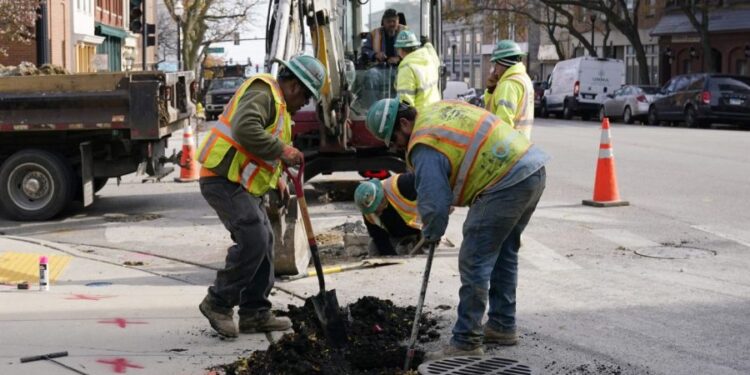
The final economic growth report before the election showed U.S. gross domestic product (GDP) rising at strong pace, according to data released Friday by the Commerce Department.
U.S. GDP grew at an annualized rate of 2.8 percent between July and September, according to the latest data from the Commerce Department. GDP growth slowed slightly from a 3 percent rate in the second quarter, but came in above economists’ expectations of 2.6 percent.
Despite the pressure of inflation and high interest rates, the U.S. economy has held strong throughout the year and may be approaching the “soft landing” sought by economists.
Ryan Sweet, chief U.S. economist at Oxford Economics, said the GDP report “sends a clear message that the economy is doing well, and inflation is moderating.”
The strong GDP growth, “reduces the risk of a sudden and significant increase in layoffs. This increases our conviction in our above-consensus forecast for growth next year,” Sweet said in an analysis.
Inflation has now fallen to within striking distance of the Federal Reserve’s 2 percent annual target and the unemployment rate has remained not far above 4 percent.
The turning economic tide comes as Vice President Harris and former President Trump are battling over who would be best for the U.S. economy, which polls shows as a top issue among voters.
Americans appear to be more confident in the economy with less than a week until Election Day, with both consumer spending and sentiment on the rise.
Spending on consumer goods and services rose at an annualized rate of 3.7 percent during the third quarter, up from 2.8 percent in the second and just 1.9 percent in the first.
The Conference Board’s consumer confidence index also surged to 108.7 in October from 99.2 in September, the biggest monthly gain since March 2021 and well past analysts’ forecast of 99.3.
The Harris campaign is facing pressure from Democrats to focus more on the economy in her closing argument against Trump and sell working class voters on her plans to expand housing, support small business growth and increase tax credits for families with children.
Trump has leaned hard into plans to aggressively increase tariffs, extend key provisions of his 2017 tax-cut law and deport millions of immigrants from the U.S. as the pillars of his economic agenda.
Updated at 9:18 a.m.






